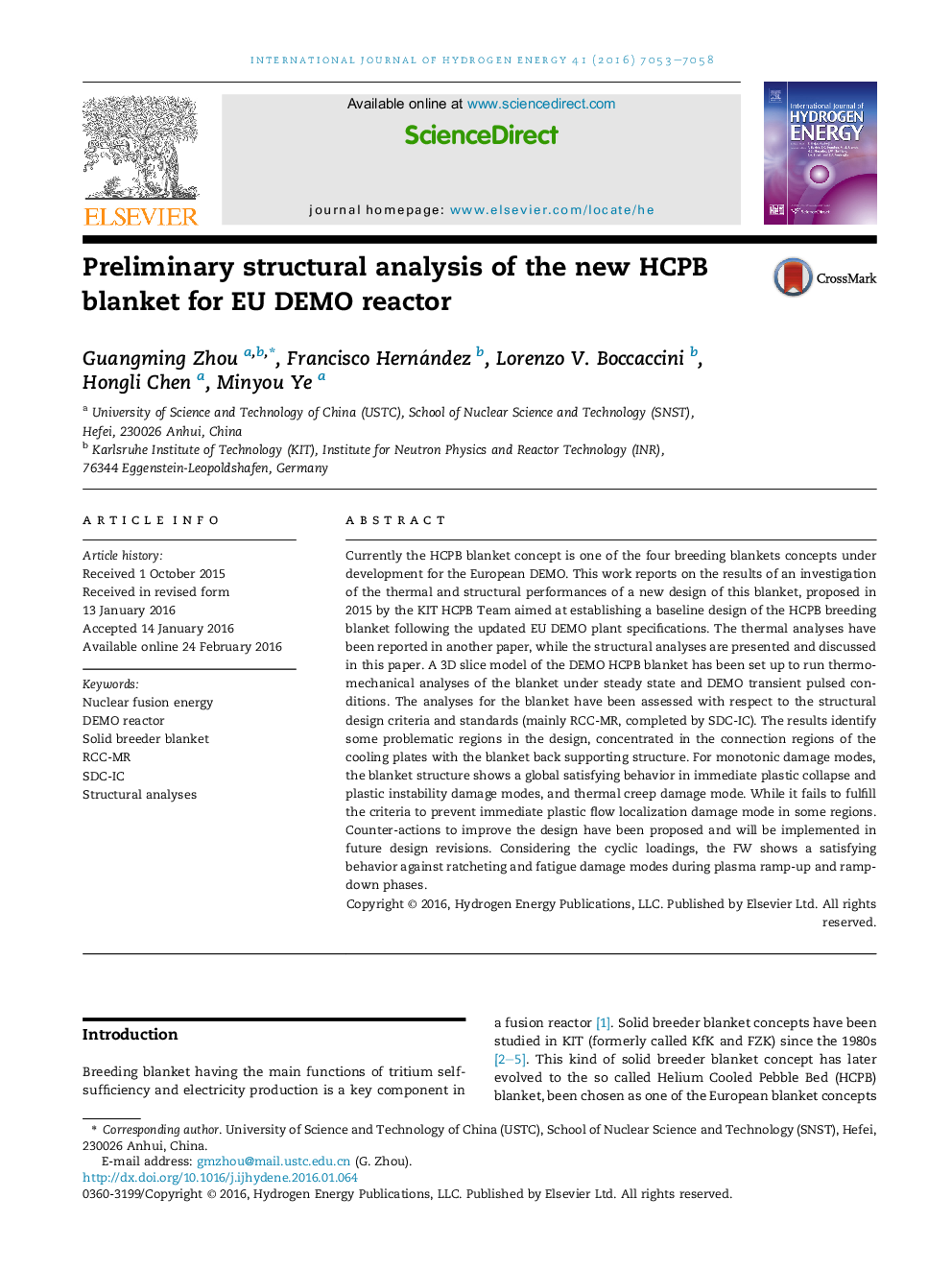| Article ID | Journal | Published Year | Pages | File Type |
|---|---|---|---|---|
| 1277446 | International Journal of Hydrogen Energy | 2016 | 6 Pages |
•The first time for DEMO HCPB blanket concept to be fully assessed with respect to the structural design criteria (Level A).•Not only monotonic damage assessed, but for the first time for DEMO cyclic ones, considering ratcheting and fatigue analyses.•Problematic regions identified: located on the connection regions of cooling plates and blanket back supporting structure.•Counter-actions to improve the design proposed, and to be implemented in future design revisions.
Currently the HCPB blanket concept is one of the four breeding blankets concepts under development for the European DEMO. This work reports on the results of an investigation of the thermal and structural performances of a new design of this blanket, proposed in 2015 by the KIT HCPB Team aimed at establishing a baseline design of the HCPB breeding blanket following the updated EU DEMO plant specifications. The thermal analyses have been reported in another paper, while the structural analyses are presented and discussed in this paper. A 3D slice model of the DEMO HCPB blanket has been set up to run thermo-mechanical analyses of the blanket under steady state and DEMO transient pulsed conditions. The analyses for the blanket have been assessed with respect to the structural design criteria and standards (mainly RCC-MR, completed by SDC-IC). The results identify some problematic regions in the design, concentrated in the connection regions of the cooling plates with the blanket back supporting structure. For monotonic damage modes, the blanket structure shows a global satisfying behavior in immediate plastic collapse and plastic instability damage modes, and thermal creep damage mode. While it fails to fulfill the criteria to prevent immediate plastic flow localization damage mode in some regions. Counter-actions to improve the design have been proposed and will be implemented in future design revisions. Considering the cyclic loadings, the FW shows a satisfying behavior against ratcheting and fatigue damage modes during plasma ramp-up and ramp-down phases.
